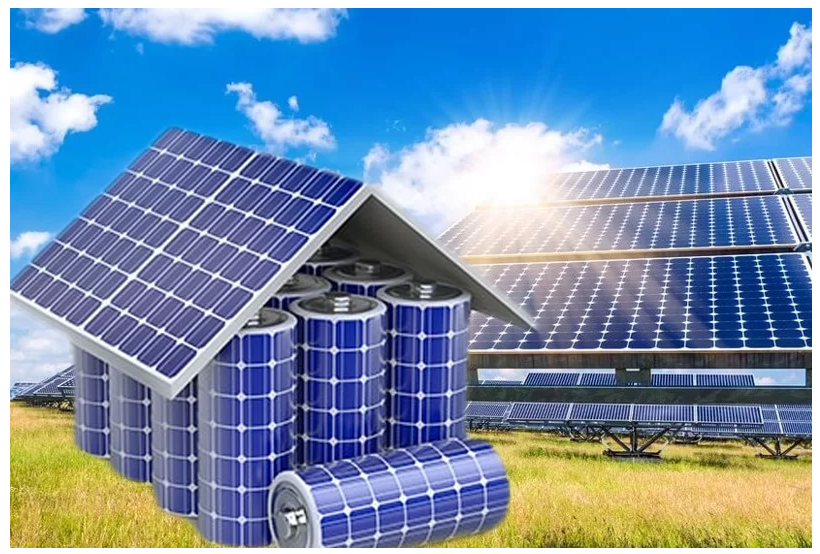
An authentic solar battery should have a minimum lifespan of 5 years and a maximum of 20 years, depending on the type of battery and its use.
Most lead-acid solar batteries last for about 5 years, while lithium-ion solar batteries go up to 20 years in life expectancy.
A solar battery's lifespan could also be limited by its Depth of Discharge (DOD). For instance, most Lead-Acid batteries have a 50% DOD.
This means a Lead-Acid battery rated 10kWh can discharge 5kWh for use, after which it will need to be recharged. Hence the frequent need for a recharge that eventually degrades the battery.
The effectiveness of a solar battery is largely contributed by a durable solar panel. Here is a description of the structural components of a solar panel that one needs to consider alongside the battery.
It is designed to provide protection to the inner components of the solar panel. The strength of tempered glass triple outweighs that of normal glass. It shields the inner component from external contaminants such as moisture/rain, chemical spills, etc.
Another advantage is that this glass is user-friendly. Unlike normal glass, it does not break into sharp edges that could easily piece exposed body parts.
When purchasing a long-lasting solar panel, ensure that the product description is inclusive of tempered glass because of its ability to protect the panel components throughout the lifespan/warranty period.
Solar panels are made up of solar cells that convert sunlight energy into electrical energy through the photovoltaic effect. These solar cells are encapsulated by an EVA film, acting as a barrier between the top glass(tempered glass) and the solar cells. It sandwiches the solar cells between the tempered glass and the back sheet.
Most EVA films have an approximate thickness of 0.045mm. They are transparent and have a low thermal resistance to enable light energy transmitted through the tempered glass to reach the solar cells.
When the panel is heated under direct sunlight, the EVA film seals and insulates the solar cells, this prevents the entry of air and atmospheric moisture that could otherwise damage the solar cells through oxidation.
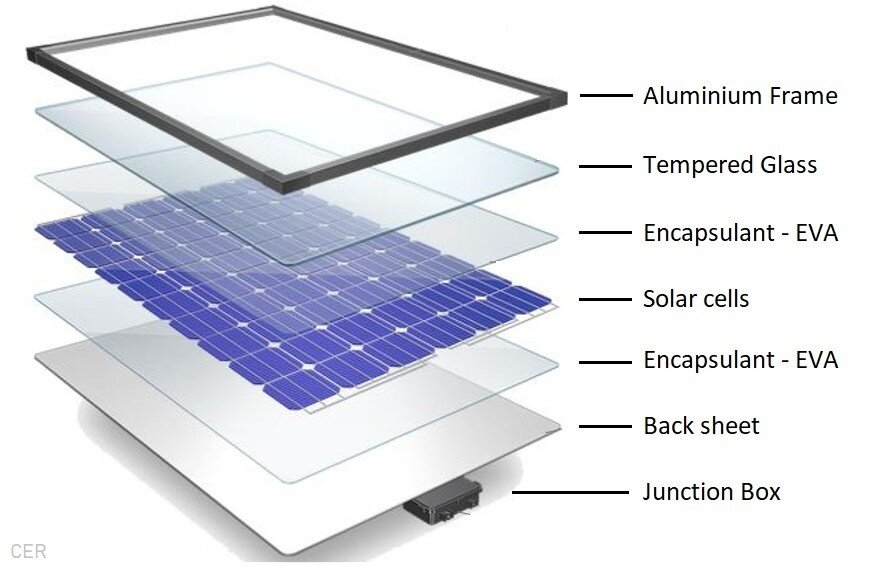
The PhotoVoltaic cells convert solar energy into direct current electrical energy with the help of n-type and p-type semiconductors that join to create an electrical field also known as a p-n junction within the cells.
Usually made of polymers, the role of the back sheet is to insulate and protect the electrical components of the PhotoVoltaic Cells from external weather conditions that might otherwise damage the PV on exposure.
This is used to offer protection to the entire panel components by holding in place the glass covering/tempered glass at the top and the back sheet at the bottom.
A number of solar panels are laminated with the 6000 series aluminum, found to be the most effective by manufacturers.
Due to its resistance to corrosion, the aluminum frame is able to protect the inner components of the solar panel from adverse weather conditions as well.
A junction box is where PhotoVoltaic strings of solar modules are electronically connected. It is also made up of diodes that prevent electric current from flowing back into the panel when there is no sunshine.
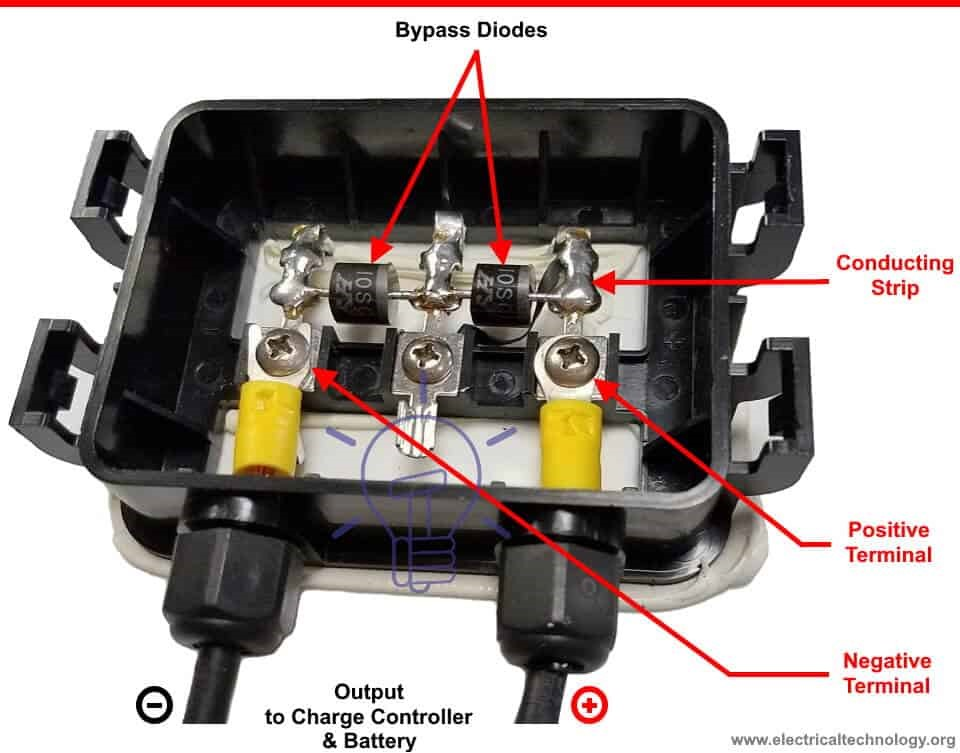
Silicon is used in sealing gaps at the edges and surfaces of a solar panel. This is to prevent moisture penetration and dirt build-up into the inner components of the panel.
As a result of the silicone seal, most solar panels are able to withstand their life expectancy, there being no penetration from external contaminants.
A number of manufacturers also prefer silicone seals because of their affordability, high adhesion, and weather resistance.
A solar battery stores energy through an off-grid solar power system, enabling one to utilize their energy even on a non-sunny day.
There are 4 commonly known types of solar batteries, that is;
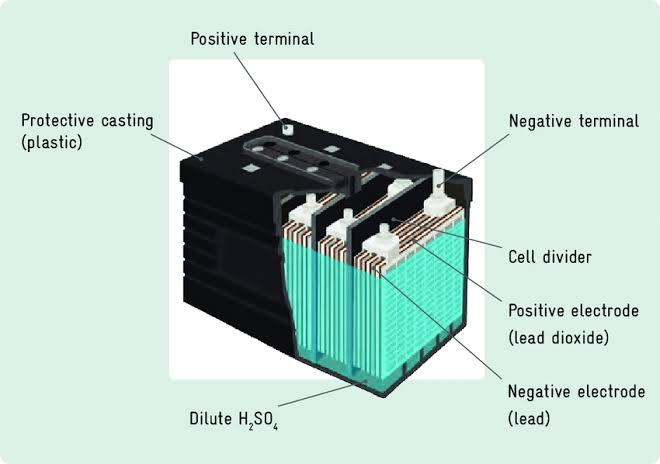
Diagram of a Lead-Acid Battery
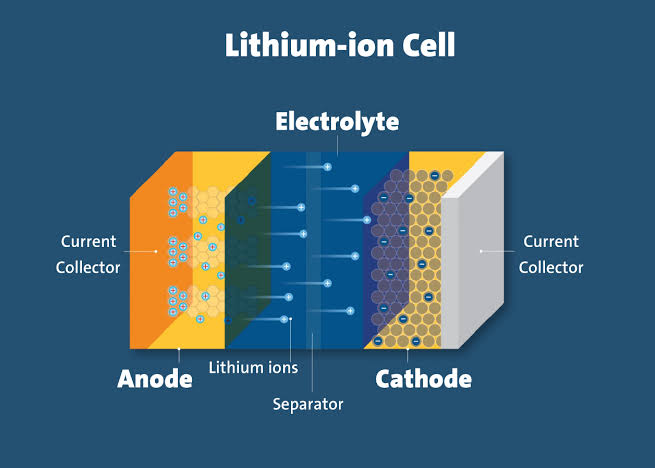
Internal components of a Lithium-ion battery
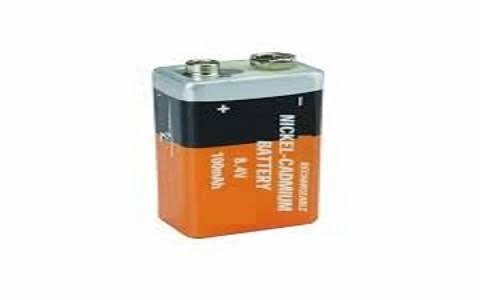
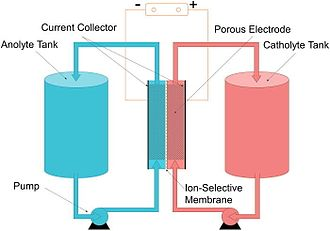
An illustration of how a flow battery works
The type of battery is determined by the primary chemical composition of the battery. Flow batteries on the other hand are constituted of a water-based Zinc bromide solution.
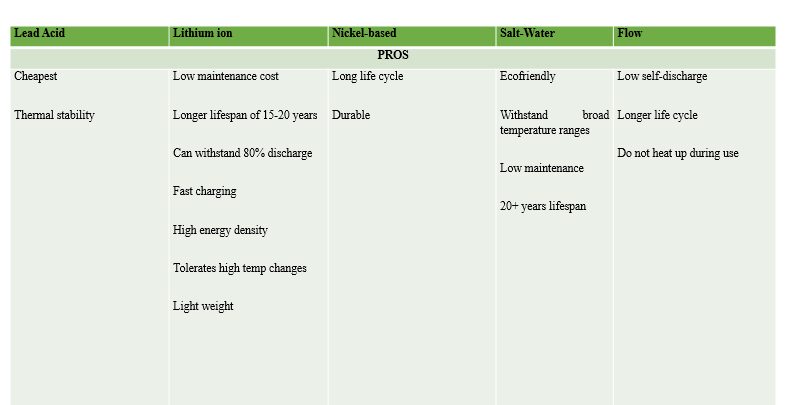
Pros of different types of Solar batteries
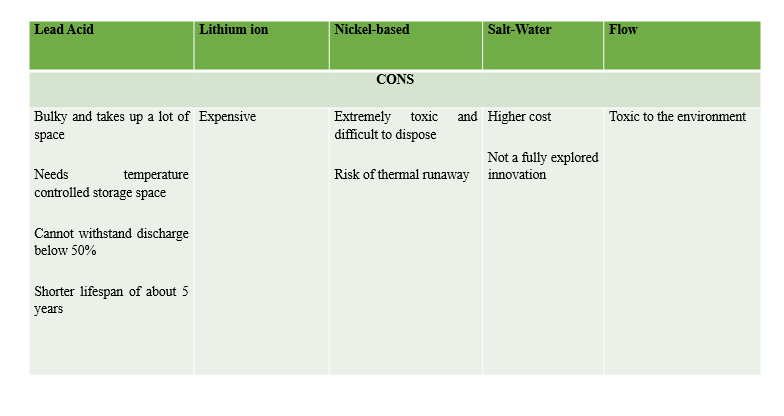
Cons of different types of solar batteries
The solar panel, with its various components discussed above, absorbs energy from the sun and converts it into Direct Current (DC). The DC electricity enters the solar battery storage, where it will be converted to Alternating Current (AC) with the help of an inverter to be used in home appliances.
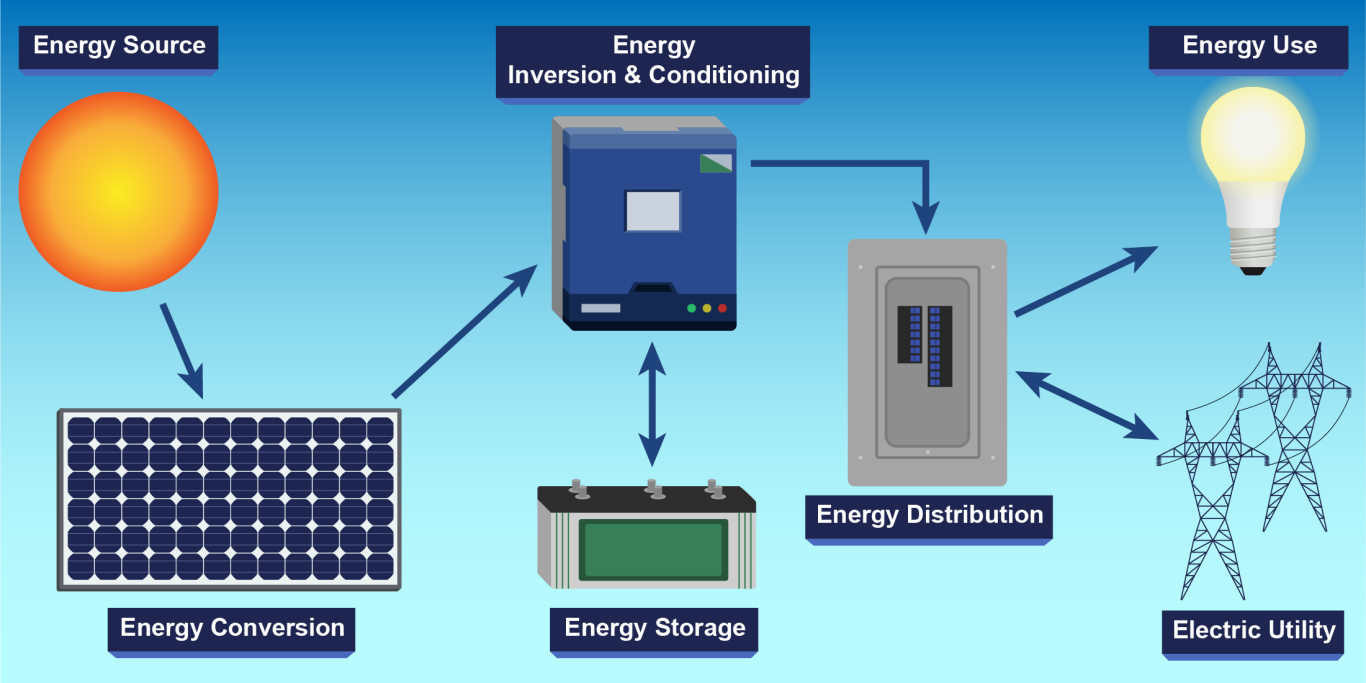
Solar batteries drain their electric charge into a load/electric appliance through a live circuit. The greater the cumulative voltage of the appliances in use the faster the drain of charge from the battery.
However, it has been proven over time that solar batteries can self-discharge through the parasitic battery discharge phenomenon due to leakage current inside the cells.
An effective solar battery will hold a charge for about 1-5 days before recharge. This is highly dependent on the type of solar battery.
For instance; if a 10kWh battery has its maximum Depth of Discharge (DOD) at 50%, it means that you should not use more than 5kWh from the battery before recharging it again.
Most Lead acid batteries have a DOD of 50% while modern Lithium-ion batteries have a promising DOD of 80-100% making the latter to be the most preferred.
To determine how long your solar battery will last, consider its DOD as a priority among other factors.
A solar battery may slightly exceed its life expectancy period with a predicted margin of 1-2 years. However, this is greatly contributed by proper maintenance of the battery. To achieve this, consider the following maintenance tips for your battery.
1. Do not overload your battery with appliances. For instance; if the battery's capacity is 10kW, the connected appliances should not exceed the capacity.
2. The more appliances loaded, the faster it drains its charge hence the need for frequent recharging that faults the battery.
3. Do not overcharge the battery. This is achieved with the help of an effective charge controller fitted on the solar grid.
4. Store the battery in compatible temperature conditions. Some batteries may become faulty due to extreme temperatures in the surrounding.
5.Follow the manufacturer's guide on a battery's maintenance procedures.
6. Invest in a high-quality solar battery.
The life expectancy of the battery is determined by the number of use cycles of the battery. After reaching their cycle limit, solar batteries will not store charge effectively.
Measured in kW/H, the storage capacity of a battery should match the size of the PV system and be able to supply power to all the intended appliances in the house.
The cheaper the battery, the less effective it will be. Solar batteries could last up to 15 years depending on the technology employed in their manufacturing. Less costly solar batteries like Lead-acid rarely exceed a lifespan of 5 years.
To further understand the factors that might contribute to the cost of solar installation at large, check out this guide.
As mentioned earlier, solar batteries were grouped into at least 4 different categories based on their chemical composition. Lithium-ion batteries, flow( zinc bromide), and Lead-acid batteries are composed of less environmentally friendly chemicals which makes them difficult to dispose of.
It's now evident that a solar battery will serve you anywhere between 5-20 years with Lead-acid batteries being in the lower range of 5 years and Lithium-ion batteries in the higher range of 20 years.
The most important tip for a long-lasting battery is to select a battery storage system that is able to support your household appliances.
A low DOD could also greatly affect the lifespan of your battery because it will prompt continuous charging of the battery.